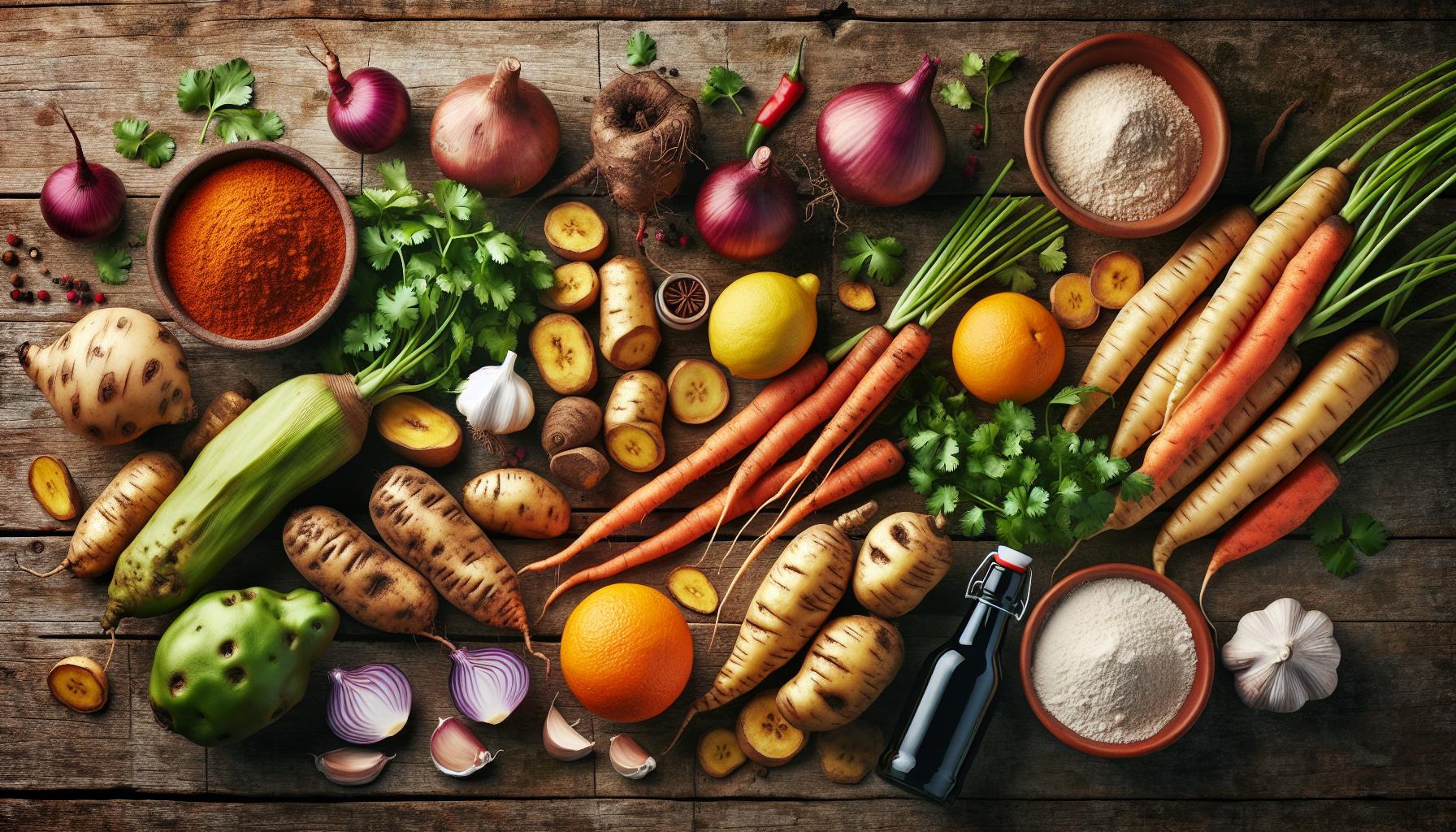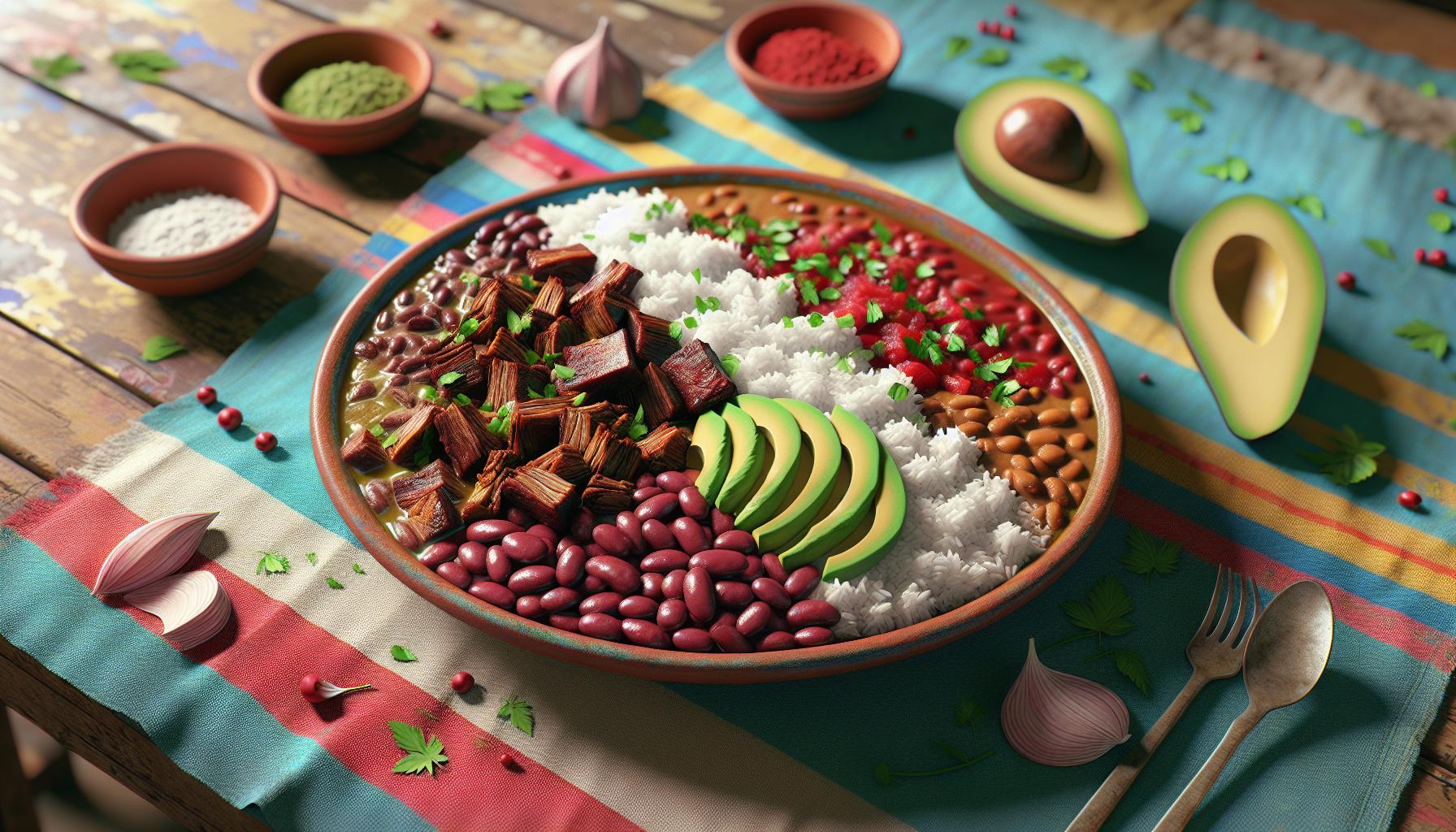The vibrant flavors of Dominican Republic cuisine tell a story that spans centuries of cultural fusion. From the Indigenous Taíno people to Spanish colonizers and African influences this Caribbean nation’s food culture represents a melting pot of traditions that’ll make any food lover’s heart skip a beat.
Dominican gastronomy goes far beyond the famous plantains and rice. It’s a celebration of life where every meal becomes a social gathering filled with laughter music and the irresistible aromas of sancocho stews simmering on stovetops. In Dominican households cooking isn’t just about sustenance – it’s an expression of love passed down through generations like a treasured family heirloom.
Traditional Dominican Republic Food Culture
Traditional Dominican Republic Food Culture cuisine embodies a profound blend of cultural influences that span centuries of history. The interplay of Indigenous Taíno, Spanish colonial, and African culinary traditions forms the foundation of modern Dominican gastronomy.
Indigenous Taino Influences
The Taíno people established the cornerstone of Dominican cooking through their agricultural practices and food preparation methods. They introduced essential crops like yuca, batata (sweet potato), maíz (corn), and guayaba (guava). Taíno cooking techniques included barbacoa (barbecue) and the creation of casabe, a crispy flatbread made from yuca that remains popular today. The Taíno developed sophisticated methods for fermenting foods, preserving vegetables, and processing root vegetables into staple ingredients.
Spanish and African Fusion
Spanish colonization brought Mediterranean ingredients like olive oil, garlic, onions, beef, and pork to Dominican kitchens. African influences enriched the cuisine with plantains, coconut, various tubers, and unique cooking methods. This fusion created signature dishes like mangú (mashed plantains), sancocho (hearty meat stew), and locrio (seasoned rice with meat). African cooking techniques introduced deep frying, slow cooking, and the use of aromatic spices like achiote (annatto) which gives Dominican dishes their distinctive color and flavor.
Essential Dominican Ingredients

Traditional Dominican Republic Food Culture cuisine relies on a core set of indigenous ingredients that form the foundation of its most iconic dishes. These ingredients reflect the country’s agricultural heritage and tropical climate.
Root Vegetables and Plantains
Root vegetables dominate Dominican cooking with yuca serving as a staple carbohydrate. Batata (sweet potato) adds natural sweetness to both savory dishes and desserts. Green plantains transform into crispy tostones or creamy mangú through different preparation methods. Ñame (yam) appears in hearty soups like sancocho. Fresh yautía (taro root) contributes an earthy flavor to stews and casseroles. These starchy vegetables create filling base ingredients that complement proteins and provide essential nutrients.
Local Spices and Seasonings
Traditional Dominican Republic Food Culture seasoning starts with sofrito – a blend of cilantro garlic onions peppers. Bitter oranges (naranja agria) add citrus notes to marinades for meat dishes. Recaito paste combines culantro oregano ajíes (hot peppers) for depth of flavor. Ground annatto seeds (achiote) give dishes their signature orange-red color. Fresh thyme oregano parsley enhance soups stews sauces. Sazón completo spice packets contain cumin coriander adobo for convenient seasoning. These aromatic ingredients create the distinctive taste profile of Dominican dishes.
Popular Traditional Dominican Dishes

Traditional Dominican Republic Food Culture cuisine features signature dishes that showcase the country’s cultural fusion through distinctive preparation methods and local ingredients. Each dish tells a story of heritage while satisfying both everyday meals and special occasions.
La Bandera Dominicana
La Bandera Dominicana represents the quintessential Dominican lunch plate, consisting of white rice, stewed red beans, and meat. This national dish mirrors the colors of the Dominican flag through its components: rice (white), beans (red), and meat with a side of salad (symbolizing the blue). Dominican cooks prepare the beans by simmering them with garlic, onions, cilantro, and oregano until tender. The meat component typically features pollo guisado (braised chicken) or carne guisada (braised beef) seasoned with sofrito, tomato paste, and bitter orange. Fresh avocado slices accompany the plate, adding creamy texture to this wholesome combination.
Sancocho and Hearty Stews
Sancocho dominicano stands as the country’s most celebrated stew, combining seven different types of meat with root vegetables. This hearty dish incorporates beef, pork, chicken, longaniza sausage, and various local tubers like yuca, ñame, and yautía. Dominican cooks prepare sancocho by simmering the ingredients with corn, plantains, cilantro, and local spices in a rich broth for several hours. The stew appears at family gatherings, holidays, and special celebrations throughout the country. Regional variations exist across different provinces, with some areas adding goat meat or incorporating specific local ingredients. Traditional accompaniments include white rice, avocado, and hot sauce.
Dominican Dining Customs and Etiquette

Dominican dining traditions emphasize communal eating experiences centered around family gatherings. These customs reflect deep-rooted cultural values that prioritize social connections through shared meals.
Family-Style Meals
Dominican families serve meals on large platters placed at the center of the table for everyone to share. Diners pass dishes clockwise starting with the eldest family member at the table. Adults occupy the main dining table while children often sit at separate smaller tables during formal occasions. Common serving vessels include wooden spoons for beans rice bowls for grains ceramic platters for meat dishes. The host portions food onto individual plates ensuring everyone receives equal servings before beginning the meal. Multiple generations gather to share stories connect through conversation appreciate traditional recipes during these family-style dining experiences.
Meal Timing and Structure
Dominican meals follow a consistent daily schedule. Breakfast starts at 7:30 AM featuring mangú tostadas eggs coffee. La comida (lunch) occurs between 12:00-2:00 PM serving as the primary meal with La Bandera Dominicana. La cena (dinner) takes place at 6:00-8:00 PM featuring lighter fare like soup sandwiches salads. Mid-morning snacks called bocadillos include fresh fruit pastries coffee. Lunch breaks extend 2 hours allowing time to return home for family meals. Restaurant service adapts to these traditional mealtimes with peak hours matching typical family dining schedules. Many businesses close during lunch hours enabling workers to enjoy proper meals with family members.
Street Food Culture
Traditional Dominican Republic Food Culture street food culture thrives in bustling corners across cities towns where vendors serve affordable authentic dishes from mobile carts colorful kiosks. These portable culinary stations offer quick satisfying meals that showcase the country’s diverse flavors traditions.
Popular Street Snacks
Traditional Dominican Republic Food Culture street vendors specialize in portable snacks called “frituras” served in small portions perfect for on-the-go eating. Yaroa combines layers of mashed plantains or french fries topped with seasoned ground beef cheese mayonnaise ketchup. Quipes (deep-fried bulgur rolls stuffed with spiced beef) reflect Middle Eastern influences in Dominican cuisine. Empanadas filled with chicken beef or cheese provide a hearty handheld meal. Chicharrón (crispy pork skin) pairs with yuca balls as popular evening snacks. Pica pollo (Dominican fried chicken) stands dot street corners serving crispy pieces with tostones lime wedges.
Regional Street Food Specialties
Santo Domingo’s Malecón features fresh seafood fritters pescado frito (fried fish) seasoned with lime Dominican oregano. Santiago vendors specialize in chimi (Dominican-style hamburgers) topped with special cabbage sauce. Puerto Plata’s street food scene highlights johnny cakes (deep-fried bread) stuffed with cheese eggs or salami. Coastal regions offer fresh coconut water yaniqueques (Johnny cakes) influenced by English-speaking Caribbean immigrants. Mountain towns serve traditional corn-based treats like maíz caquiao (cracked corn) chenchen (cornmeal mush) topped with stewed goat meat.
Festive Food Traditions
Dominican celebrations intertwine deeply with traditional cuisine, featuring elaborate dishes that mark special occasions throughout the year. Each festivity showcases unique culinary preparations that reflect cultural heritage and family traditions.
Holiday Dishes
Christmas tables showcase pavochón, a turkey seasoned with citrus and Dominican spices, served alongside pasteles en hojas (plantain and root vegetable tamales wrapped in banana leaves). During Easter, habichuelas con dulce emerges as a cherished dessert soup made from creamy sweet beans blended with coconut milk, spices, sweet potato chunks, and milk cookies. New Year’s Eve features traditional puerco asado (roasted pork) accompanied by moro de guandules (rice with pigeon peas). Religious celebrations like Dia de Los Reyes feature pan dulce (sweet bread) decorated with candied fruits.
Celebration Meals
Birthday celebrations center around traditional dishes like sancocho accompanied by tostones and avocado slices. Weddings feature elaborate buffets with whole roasted pig (lechón asado) as the centerpiece, complemented by various rice dishes and root vegetable preparations. Quinceañeras showcase special pastelones (casseroles) layered with plantains or yuca, seasoned ground beef, and cheese. Family gatherings during Holy Week feature pescado al coco (coconut fish stew) served with sweet plantains. Special occasions incorporate dulces típicos (traditional sweets) like majarete (corn pudding) and habichuelas con dulce.
Modern Influences on Dominican Cuisine
Dominican cuisine continues to evolve through global culinary trends while maintaining its traditional roots. Contemporary innovations blend time-honored recipes with modern cooking techniques creating unique gastronomic experiences.
Contemporary Adaptations
Traditional Dominican Republic Food Culture chefs incorporate international cooking methods into traditional dishes creating elevated versions of classic recipes. Fine dining establishments in Santo Domingo transform humble ingredients like yuca into sophisticated presentations. Local restaurants offer health-conscious alternatives including quinoa substitutions for rice in La Bandera Dominicana or plant-based versions of sancocho. Modern kitchen equipment enables faster preparation of traditional dishes such as pressure cookers for beans or food processors for sofrito. Fusion restaurants combine Dominican flavors with Asian spices creating dishes like Asian-spiced chicharrón or wasabi-infused tostones. Social media food influencers showcase innovative takes on Dominican street food incorporating global ingredients like Korean gochujang in chimis or Japanese panko on empanadas.
Global Impact
Dominican flavors extend beyond national borders influencing international cuisine through diaspora communities. Major cities like New York Miami Madrid feature Dominican restaurants adapting traditional recipes to local tastes. Food delivery apps increase accessibility to Dominican dishes introducing mangú bowls plantain-based pizzas mofongo fusion tacos to global audiences. Celebrity chefs spotlight Dominican ingredients on cooking shows creating awareness of items like bitter oranges Dominican oregano casabe. International food festivals showcase Dominican gastronomy leading to collaborations between Dominican chefs global culinary experts. Popular chain restaurants incorporate Dominican-inspired items introducing wider audiences to Caribbean flavors textures spice combinations.
Dominican cuisine stands as a testament to the country’s rich cultural heritage where every dish tells a story of historical influences resilience and family bonds. This vibrant food culture continues to thrive both in traditional home kitchens and modern restaurants while maintaining its authentic soul.
The fusion of Indigenous Spanish and African influences has created more than just delicious meals – it’s crafted a unique culinary identity that brings people together. As Dominican food culture evolves it proves that tradition and innovation can coexist celebrating both its roots and its future.
From street food vendors to family gatherings Dominican cuisine remains a powerful expression of love community and national pride. It’s a living breathing tradition that continues to captivate food lovers worldwide while staying true to its cherished heritage.



